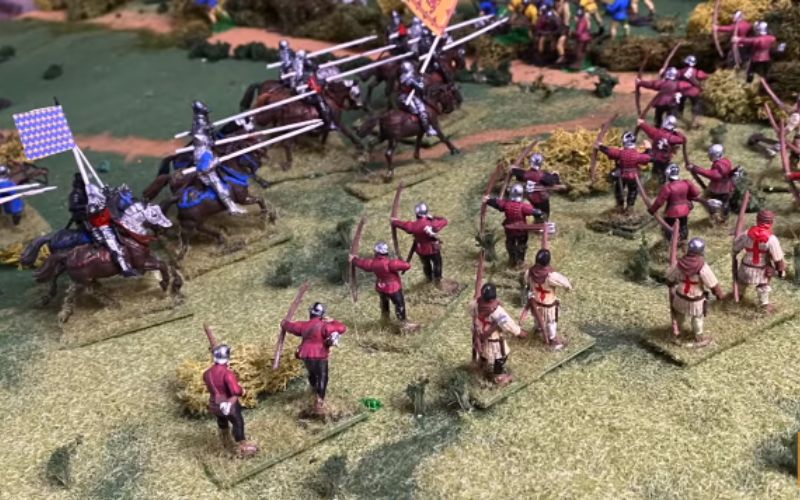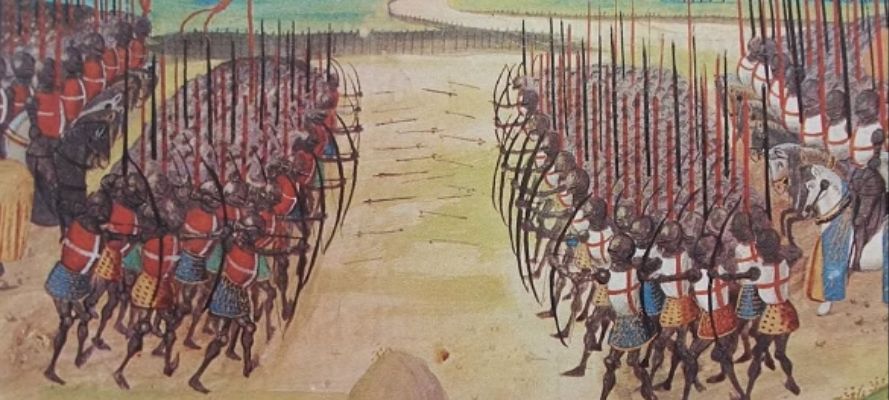Did you know that the longbow that you see many archers use today made its first appearance during the end of the Middle Ages? Well, according to historians, the Celts in Wales were responsible for the longbow invention.
That dates back to around 1180 C.E. However, and there is other evidence that suggests a different era. So, it goes without saying that if you want to dive into the history of longbow, you have to look really far back!
However, unlike other bows, the longbow history facts are pretty interesting. And if you are really into archery, you will definitely enjoy what we are about to share in this discussion. So, carry on reading!
Table of Contents
When Was the Longbow Invented?
You will find different information regarding longbow invention. Some historians argue that the Celts in Wale were the ones that started the longbow history, while others have a different take on the topic.
For example, in 1991, archaeologists found a natural mummy in the Ötztal Alps. The mummy, which goes by the name of Ötzi, had a longbow.
This bow was 1.82 meters long, roughly 72 inches, and was of yew. Nonetheless, this mummy is believed to date back to around 3300 BC.
Now, if you have a fair idea regarding the B.C. and C.E. years, you probably know that B.C. precedes C.E.
So, it really depends on which evidence you want to trust the most.
On that note, the book "The Crooked Stick a History of the Longbow" mentions that the English longbows were deployed during the Hundred Years' War.
The starting date was 1337, and the war ended in 1453. However, you need to understand that the English military did not start to use the bow until the 1300s.
In other words, the English armies used the historical longbow long after it was invented. And when it comes to who invented the longbow, there is only information that leads to Celts.
Why Was the Longbow Invented?
The era that is the starting point for the longbow history had many other bows available. That is if you consider the medieval ages. For example, hunters had access to medieval crossbows.
According to many historians, medieval crossbows were highly powerful. They had what it took to shoot an arrow and make it land on a target that was pretty far away. So, why was there a need for longbows?
Well, the answer is pretty simple. Medieval crossbows were pretty complex. And they needed a good amount to load up and shoot the arrow. Also, they were not cheap to make.
In comparison, longbows are simple weaponry that soldiers can shoot faster than crossbows. That is not all! These bows are cheaper and easier to make. As a result, infantry could be more readily equipped with longbows than any other bows available during the medieval ages.
Wars Where the Longbows Played an Important Role
As you might have guessed by now, longbows back in the day were war weaponry. And here are some of the wars where longbows made the most impact:
Hundred Years' War or Battle of Crécy
The Hundred Years' War hugely dominated the reign of Edward III. It lasted from 1337 to 1453. After landing with around 12 thousand men, which included 7000 archers, Edward III moved northwards after taking Caen in Normandy.
But the forces of Edward were continually racked by a much larger army, the French army. They finally arrived at Crecy in 1346 and had a force of 8000. Considering the condition, the English in three divisions took a defensive position on a ground that was sloped downwards. The archers were on the flanks.
The Black Prince, Edward's sixteen-year-old son, was in charge of one of these divisions. Nonetheless, the French first sent out Genoese crossbowmen, which had between 6000 and 12000 men.
But, with a firing rate of three to five volleys in a minute, they were pretty weak to the Welsh and English longbowmen. They could fire ten to twelve arrows in about sixty seconds. According to the people's words, rain occurred during the battle, adversely affecting the bowstrings on the crossbows.

Battle of Poitiers
There is not much information regarding the Battle of Poitiers. According to the details that are available, it appears that it included an army of 10 thousand Welsh and English men. This troop was led by Prince of Wales, Edward, also known as the Black Prince.
The troop was retreating after a long campaign with a French army of somewhere between 20 thousand and 60 thousand men. And the French were in close pursuit.
These two armies were separated by a large hedge. But when the French found a gap and took the attempt to break through, the Black Prince made his men take the form.
This formation was pretty usual for the armies, which had the archers on the flanks. The French had a small cavalry unit that was specifically for attacking the Welsh and English archers. However, the number of arrows the English and Welsh showered upon them stopped them.
The next attacks came from the Germans, who were allies of the French. They brought the second cavalry attack.

Again, this attack was stopped by the English and Welsh archers. This second attack was so fierce that the Welsh and English archers apparently ran out of arrows at one point.
Timeline of the Longbow
The timeline of the longbow is a pretty long one. It's a given, considering the time it has been around. Why does the timeline matter? By going through it, you can get a proper idea about the invention and use of the longbow. So, let's have a look:
Final Words
It goes without saying that the history of longbow is pretty rich. Many important events surround this weaponry. And that explains why longbows are considered to be the most legendary and traditional bow in the archery world.
Similar Articles You May Read:

